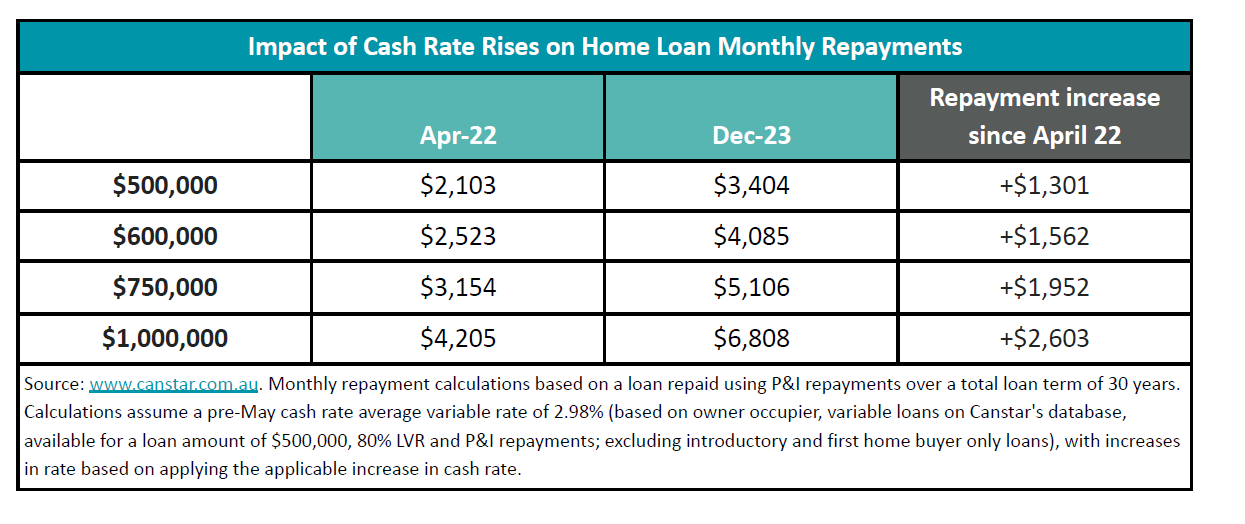

The average working Australian would have needed almost a $4,000 pay rise to keep pace with the 4.1% annual inflation rate recorded in the December quarter, recent analysis by Canstar has revealed.
The Australian Consumer Price Index (CPI) rose by 0.6% in the December quarter, contributing to an annual inflation rate of 4.1%, according to the latest data from ABS. This marks the slowest quarterly rise since March 2021, providing room for the Reserve Bank to maintain the cash rate steady in February.
“The December quarter CPI increase of 0.6% restores the economy’s trajectory towards the 2% to 3% target band for inflation and should satisfy the Reserve Bank that it doesn’t need a further rate rise in February,” said Steve Mickenbecker (pictured above), Canstar’s group executive for financial services.
“Another quarter with a result like this would see annual inflation fall to 3.3% bringing it within striking distance of the Reserve Bank’s 3% upper limit.
The major contributors to inflation in the December quarter include housing, alcohol and tobacco, insurance and financial services, and food and non-alcoholic beverages. Housing was notably impacted by new dwellings purchased by owner-occupiers, rents, and utilities.
Since May 2022, home loan borrowers have endured a 4.25 percentage point increase in the cash rate, resulting in a 62% rise in repayments. Canstar’s research estimated an approximate $1,562 increase in monthly repayments for an average $600,000 loan over 30 years or up to $2,603 for those with a $1 million loan.

To keep pace with inflation over the past year, the average working Australian, earning an annual income of $95,581, would have needed a $3,919 pay rise.

“Even for those without a mortgage, the going has been tough over the past year with the cost of living up by 4.1%,” Mickenbecker said. “Not many workers have enjoyed the 4.1% wage increase in 2023 needed just to tread water. Coming on top of the 7.8% increase in cost of living in the prior 12 months, even fewer people will have kept pace.”
Mickenbecker highlighted the need for Australians to proactively address the inflation shortfall, saying, “If the boss hasn’t bumped up your wages to match inflation, which is highly likely for many working Aussies, you have to try and make up the shortfall yourself.”
To address the nearly $4,000 shortfall, Aussies are urged to consider potential savings of $12,741 in the first year by switching household bills from the average to the cheapest or best-valued options.
Canstar’s latest Consumer Pulse Report indicated that 76% of Australians have not experienced any cost relief in the past year, with the majority (81%) attributing this lack of relief to their bills remaining stagnant or, in some cases, even increasing. Some 33% attributed it to an inability to reduce expenses, 17% cite a decline in income, and 2% attribute it to various other reasons.
Mickenbecker noted that the phase three tax cuts will add some inflationary pressure, but RBA remains confident that the impact will be minimal. He highlighted that lower inflation for the quarter is positive news, slowing the pace of price rises, but acknowledges that existing price increases are already ingrained.
“Interest rates won’t be falling any time soon, with the banks expecting the first cut in the second half of 2024,” he said. “Borrowers will be left licking the wounds inflicted on the household budget by home loan repayments rising by 62% over the past year and a half.”

Get the hottest and freshest mortgage news delivered right into your inbox. Subscribe now to our FREE daily newsletter.
